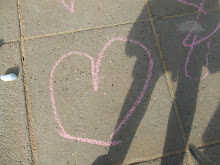1967 was the Summer of Love. Tens of thousands of young people gathered at Haight-Ashtray and began a cultural revolution. Hippies swarmed to San Francisco, which became a melting pot for music, psychedelic drugs, free love and communal living. One popular form of social experimentation that arose was communal living. Groups of people formed communities where the all of the members of a particular residence were free to share resources amongst one another.
Nearly two decades after The Summer of Love, the same type of counterculture ideas emerged half way around the world, in Copenhagen, Denmark. Young left-wing activists started a social movement that would provide housing as well as an outlet for an alternative culture that, following in the footsteps of its hippie predecessors, rejected mainstream ideals. In 1982, Ungdomshuset, ("The Youth House") a building located at Jagtvej 69 in Nørrebro, Copenhagen was a hangout for different youth groups whose political and cultural alliances differed from the established society in Denmark at the time. In the early 1980's the municipality of Copenhagen assigned the house to the founders of Ungdomshuset, and over the next few years the property gradually grew into an active commune. It functioned much like the hippie communes of the 60's. Many of the original inhabitants were residents of Copenhagen who could no longer afford the rising prices of housing and were therefore relocated by the government into less costly neighborhoods like Nørrebro. Reminiscent of the Native American occupation of Alcatraz, the poor Danes who were transferred to the new neighborhood banned together and formed a community amongst themselves. Ungdomshuset, in particular, was centered around non-commercial based music concerts. Artists such as Bjork and Nick Cave performed free concerts at the commune and it quickly gained notoriety as the city's premier scene for underground punk music. Along with up-and-coming musical artists, international squatters flocked to Ungdomshuset. The combination of alternative living, music, and culture, as well as a complete lack of formal government gave the s quatter a form of autonomy that was otherwise very limited through out the country. Their reaction against their conservative government and social norms mirrors the hippie counterculture movement born in San Francisco in the 1960's.
quatter a form of autonomy that was otherwise very limited through out the country. Their reaction against their conservative government and social norms mirrors the hippie counterculture movement born in San Francisco in the 1960's.
Over the years, inhabitants of the commune built a free movie theater, cafe, repair shop, and bookstore, among other things. Weekly Monday night meetings helped ensure that Ungdomshuset was running smoothly. Although the commune did not have any definitive leadership, certain rules and principles were upheld. Both violence and hard drugs were forbidden. No one could be turned away from using the house, and all forms of discrimination, such as racism and sexism were not tolerated.
The municipality of Copenhagen made plans to renovate the building for safety reasons, but encountered resistance from the occupants. Then, in 1999, the municipality put the building up for bid after the squatters failed to pay rent. The inhabitants of Ungdomshuset felt betrayed by the commune and refused to leave. Eventually, the house was acquired by Faderhuset, a religious right-wing group in Copenhagen. The court system granted Faderhuset the right to sue four of the activists living at Ungdomshuset. The court did not recognize Ungdomshuset as an organization and therefore, Faderhuset was unable to sue all of the inhabitants. In 2006, Ungdomshuset was denied the right of appeal to the Supreme Court. Unable to take any further legal action, the squatter barricaded themselves inside until the police threatened to evict them in 2007. In December of 2006, inhabitants and supporters of Ungdomshuset held a demonstration that turned quickly turned into a riot. Burning barricades were set up by demonstrators and the police were attacked with fireworks and stones. Three months later on March 1, 2007, all of the occupants of Ungdomshuset were evicted by the police, with the help of military helicopters, fire engines, and cranes. Further riots ensued, and within days, the entire city of Nørrebro was overrun. Police raided the neighborhood in order to find and deport foreign activists, who were relentlessly targeted. Many claim that undercover police joined the riots and spoke in foreign languages in order to catch any non-Danish activists. The high number of foreign arrests in conjunction with the use of teargas by the Danish police against the demonstrators, led to a heightened international interest in the riots. The police involvement was so severe that the event has been qualified as as "a 'laboratory experience' in police repression" by Le Monde diplomatique.The police came under further scrutiny when they designated the neighborhoods surrounding Ungdomshuset as an area where any citizen could be searched without any reasonable suspicion, going against Danish law. Some have even gone on record as stating that the Danish state used the riots as an opportunity to test out their anit-terrorist security forces, which is supported by the Danish police's admission to having mistakenly used Ferret 40, a potentially lethal form of teargas, against demonstrators.
The young people who sought out to create a safe environment for a countercultural movement were ultimately taken down by the rules, regulations, and sheer force of the cultural institutions they sought to gain autonomy from. Even after their eviction, the youth from Ungdomshuset fought for, and won the right to a new house in the city where they currently reside. The communal way of living that sprouted out of the hippie era in San Francisco is still alive in the streets of Copenhagen.
http://www.ungeren.dk/en.php3?id_rubrique=4
http://www.jagtvej69.dk/?OPSLAGSTAVLE%3A
http://www.emoware.org/ungdomshuset.asp
http://nyhederne.tv2.dk/krimi/article.php/id-6270998.html?ss

No comments:
Post a Comment